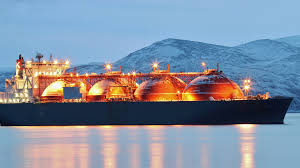PetroChina—the country’s largest oil and gas producer—is betting big on boosting natural gas production in line with the Chinese policy to increase its gas production and industrial and residential gas use.
Yet. planned production increases at the biggest upstream company will not even come close to reducing China’s dependence on oil and natural gas imports—they are set to further rise as the country’s energy demand grows. while domestic oil and gas production capacities struggle in vain to keep up with growth.
PetroChina will also look to raise its crude oil production as the world’s largest oil importing country tries to reverse a decline in its domestic crude oil production while its oil demand continues to grow.
To this end. PetroChina is planning to raise natural gas production at a faster rate than oil production.
“Domestic oil and gas resources are not good enough for significant production increases.“ PetroChina’s vice chairman Zhang Jianhua told S&.P Global Platts on the sidelines of the firm’s first-half earnings briefing last week.
Like the other Chinese state oil majors. PetroChina has also benefited from the higher crude oil prices and strong refining margins this year. reporting doubled net profit for the first half of 2018 and the best quarterly performance in the second quarter since Q2 2015.
PetroChina’s domestic crude oil production dropped by 1.3 percent in the first half of 2018. but domestic natural gas production rose by 2.5 percent. the company said in its H1 2018 earnings filing.
Over the next five years. PetroChina targets to raise its natural gas production by around 4-5 percent. while it sees oil production up 1 percent. the company’s managers said.
China’s overall crude oil production has been falling over the past two years as output at ageing fields declines. Gas production. while rising. is not enough to meet soaring demand amid the government efforts to cut pollution by having industries and residents switch to natural gas from coal.
China’s crude oil production dropped 2.6 percent on the year in July. and fell by 2.1 percent annually between January and July. according to data by the National Bureau of Statistics of China.
Although natural gas production increased. China will import growing volumes of gas to support its cleaner-fuel. cleaner-air policies.
According to the Gas 2018 report by the International Energy Agency (IEA). as domestic production can’t keep pace. China will become the world’s largest natural gas importer by 2019. Due to the country’s policy to reduce air pollution. China is expected to account for 37 percent of the global increase in natural gas consumption between 2017 and 2023. more than any other country. the IEA analysis shows.
Last year. global natural gas demand rose by 3 percent. which was the highest increase since 2010. In China. demand jumped by 15 percent. accounting for nearly a third of the global increase. China’s liquefied natural gas (LNG) imports surged. resulting in China surpassing South Korea and becoming the world`s second-largest LNG importer behind Japan.
By 2023. China’s natural gas demand is expected to rise by an average 8 percent per year. accounting for over a third of global demand increase. the IEA said in its report. The share of imports in China’s natural gas supply is seen rising from 39 percent to 45 percent by 2023. the Paris-based agency forecasts.
By boosting natural gas production. PetroChina aims to seize market opportunities while following China’s cleaner-fuel policies. Yet. China’s gas demand will vastly outpace domestic production growth. making China an even more important player on the global natural gas and LNG markets than it is now.
 Iran Energy News Oil, Gas, Petrochemical and Energy Field Specialized Channel
Iran Energy News Oil, Gas, Petrochemical and Energy Field Specialized Channel




